



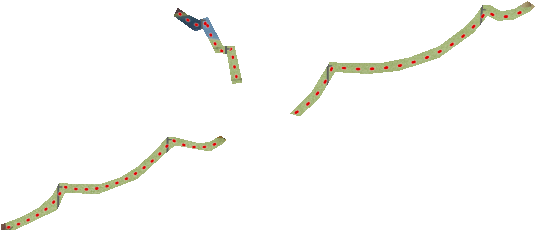
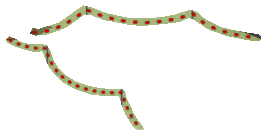
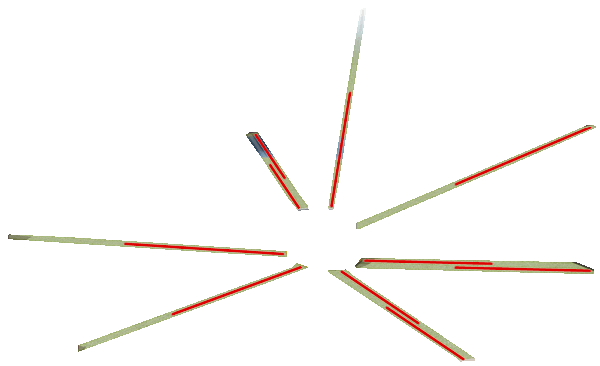
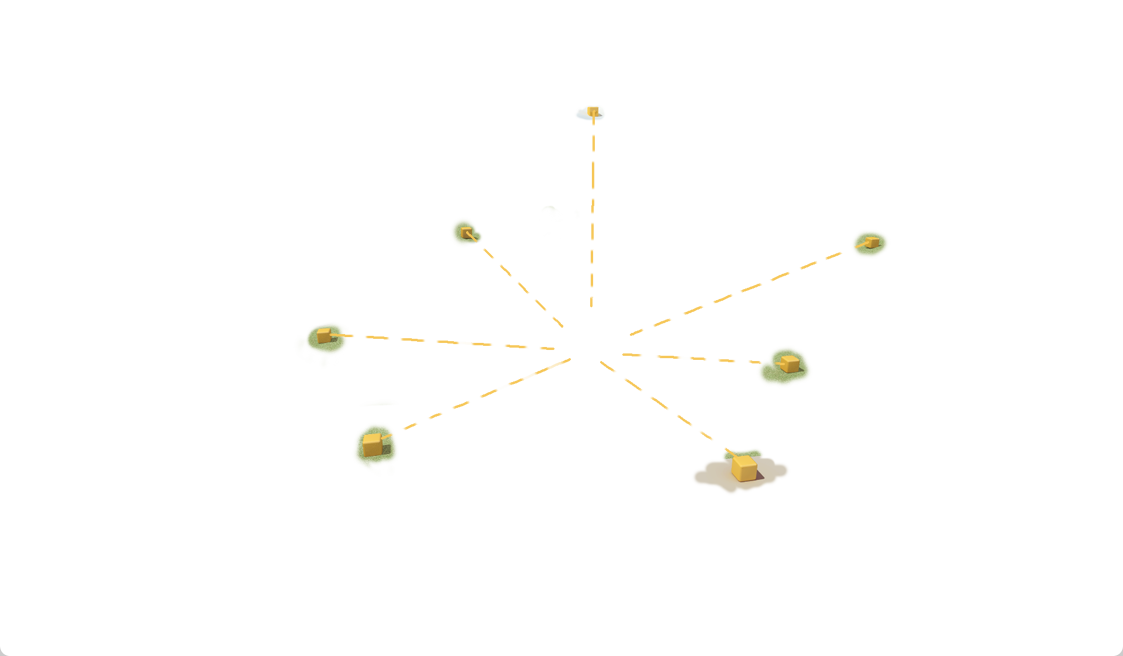
information
For a long time the roles of power distribution were clearly divided: in large power plants, electricity was generated and delivered via the power grid to private and industrial consumers. Learn how the participants in the classical energy grid function by clicking on the industrial site, private household or the power plant.
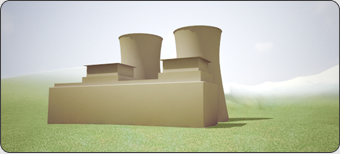
For a long time electricity was mainly produced in large-scale power plants, reliably providing constant, large amounts of energy for private consumers and industry.
Despite the ongoing expansion of renewable energy, an important part of our electricity will still be provided by traditional power plants for the foreseeable future

In the traditional energy system, the power grid took had a comparatively easy task: it carried the electricity generated at large power plants to consumers. The provider also oversaw the balance between electricity demand and production.
This system has been complicated by the increase of small, decentralized generation plants mainly using renewables: the network is not designed for these tasks and must therefore be changed. Additionally, regulating a fluctuating electricity supply from renewable energy sources is inevitable if large amounts of this energy are to be integrated into the energy system. Up-to-date information about production and consumption is a necessity.

Industry is highly dependent on a reliable and continuous power supply. The price of electricity is an important cost factor as industry requires much power.
Some electrical processes must not run continuously, but can be halted, if necessary, without interrupting production. This includes, for example, the cooling of a cold storage warehouse. In a Smart Grid, the warehouse can cover its energy needs when there is a peak offer of electricity at reasonably lower prices. The company saves energy costs, the network is relieved, and the share of renewable energy consumption rises.

The constant availability of electricity is part of everyday life in Germany. As the use of electricity is so normal, the role of most retail customers has thus far been passive. The missing overviews of actual consumption and inflexible electricity tariffs have hindered an aware handling of energy. Today, the Smart Grid and the so-called Smart Meter already make a more aware approach possible.
It has become increasingly important to use energy more sparingly due to rising energy demands, the limited availability of natural resources and climate change.
Private households are active participants of Smart Grids. With a photovoltaic system on the roof, they are no longer simply consumers, but also producers of electricity. In the future they will store power, perhaps by the use of a heat pump, the battery of electric cars or a battery designed specifically for the purpose of electrical storage. They can use times of high power supply and favorable electric prices more efficiently.
The "classic" system of power supply no longer exists. Today large amounts of electricity from renewable sources are produced from increasingly smaller, decentralized energy producers, blurring the lines between consumers and producers. For a long time now households with a modern photovoltaic system no longer just consumed electricity but became so-called "prosumers" who themselves produce electricity. With the new players, the flow of electricity has become more complex: out of the one-way street of producer to consumer is now a multi-directional energy stream flowing in different directions. At the same time, the level of the energy gained from "renewables" increasingly varies.
Consequently, new challenges arise for a more efficient power grid. The continuous balancing of the power supply with demand is a highly complex task. This task can be done only through intelligent networking of the many participants and components of the energy system.
By selecting the icons for "Current” and "Exchange of information" these relationships are revealed. By clicking on the electric tower, you will see the varying voltage potentials and which participants are contributing to it.

For a long time electricity was mainly produced in large-scale power plants, reliably providing constant, large amounts of energy for private consumers and industry.
Despite the ongoing expansion of renewable energy, an important part of our electricity will still be provided by traditional power plants for the foreseeable future
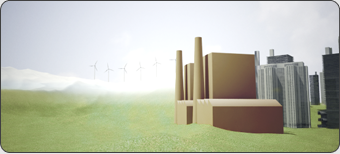
Industry is highly dependent on a reliable and continuous power supply. The price of electricity is an important cost factor as industry requires much power.
Some electrical processes must not run continuously, but can be halted, if necessary, without interrupting production. This includes, for example, the cooling of a cold storage warehouse. In a Smart Grid, the warehouse can cover its energy needs when there is a peak offer of electricity at reasonably lower prices. The company saves energy costs, the network is relieved, and the share of renewable energy consumption rises.
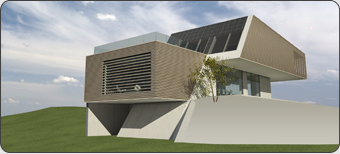
The constant availability of electricity is part of everyday life in Germany. As the use of electricity is so normal, the role of most retail customers has thus far been passive. The missing overviews of actual consumption and inflexible electricity tariffs have hindered an aware handling of energy. Today, the Smart Grid and the so-called Smart Meter already make a more aware approach possible.
It has become increasingly important to use energy more sparingly due to rising energy demands, the limited availability of natural resources and climate change.
Private households are active participants of Smart Grids. With a photovoltaic system on the roof, they are no longer simply consumers, but also producers of electricity. In the future they will store power, perhaps by the use of a heat pump, the battery of electric cars or a battery designed specifically for the purpose of electrical storage. They can use times of high power supply and favorable electric prices more efficiently.
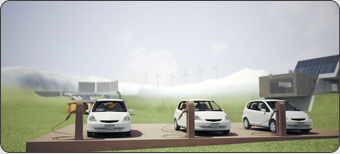
Electric mobility is a market of the future: electric powered vehicles are economical, clean and quiet. They are particularly "clean" if the electricity for the vehicles is obtained from renewable energy sources. The German Federal Government’s plan for the development of electric mobility envisions a million electric vehicles driving on German roads by 2020. CO2 emissions and the use of fossil fuels will be lowered as a result. However, the increase in the number of electric vehicles will present new challenges to the power grid, as the "fuel" must ultimately be in sufficient quantity and available in the right location.
Electric cars may play a key role in energy storage in the Smart Grid. The batteries of electric cars serve as a flexible energy pool that can be tapped during peak demand and recharged when the demand is low. This storage function is becoming very important due to greater fluctuation in energy supplies resulting from the increase in renewable energy sources.
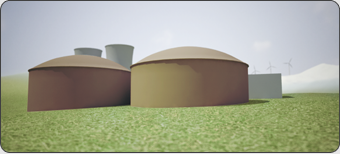
Biomass power plants belong to the complex of renewable energies because they produce electricity from solid biomass, such as waste wood, straw and leaves. Its great advantage: providing a constant supply of electricity into the grid - unlike other ' renewables'. This advantage is used optimally in the Smart Grid. Wind turbines, solar parks and biomass power plants are combined as a "virtual power plant". Fluctuations are compensated accurately and automatically.
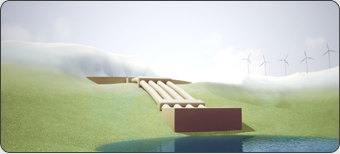
Storage capabilities are becoming increasingly important as the share of fluctuating renewable energies in electricity production strongly increases. Storage power plants are able to absorb "overproduction" on particularly sunny or windy days and convert it to electricity when demand is high.
Storage is an integral part of the Smart Grid. This ranges from the battery of the domestic electric car to large hydro-electric storage stations. In addition to environmental benefits, they have other advantages: if necessary the stored electricity is available on short notice for which a conventional power plant might require several hours.
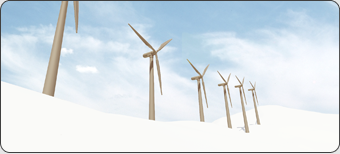
Wind turbines are a strong pillar in electricity production from renewable energy sources, however, wind, like the sun, is not always available as an energy source. An efficient and environmentally friendly use of wind and solar energy requires that their fluctuating energy deliveries be compensated for by the energy system.
In the Smart Grid over or under production will be specifically controlled to offset future fluctuations. So, for example, the power gained through strong winds can be directed to power storage facilities. This stored energy can then be used when winds are calm and there is high energy demand.

The fluctuating supply from renewable energy sources, as well as the regional increase of energy production, already tests the limits of the power grid. In addition to an expansion of power grids, they must be converted into intelligent networks. It is crucial to obtain more information about supply and demand. Future control can only be achieved on the basis of this information. This includes questions on when the customer re-charges his electric vehicle, when the cold store plant cools or when excess capacity is stored. Control can be managed, for example, through price levels. The use of robotics - within certain limits - but controlled by the customer is also imaginable.
An intelligent power grid is not an end in itself. Rather, permanent and up-to-date information on consumption and production allow a safe, economic and environmentally friendly handling of energy.
See how participants in the energy market will benefit and how interaction in the Smart Grid works. With a click on the wind symbol two scenarios are shown, one with little and one with much wind, which exemplify how the intelligent network can respond to fluctuating supply from renewable energy sources.

Industry is highly dependent on a reliable and continuous power supply. The price of electricity is an important cost factor as industry requires much power.
Some electrical processes must not run continuously, but can be halted, if necessary, without interrupting production. This includes, for example, the cooling of a cold storage warehouse. In a Smart Grid, the warehouse can cover its energy needs when there is a peak offer of electricity at reasonably lower prices. The company saves energy costs, the network is relieved, and the share of renewable energy consumption rises.

When there is little available electricity from wind power, the gap is closed by traditional power plants and the use of reserves. Energy prices rise with energy shortages. To save energy costs, factory operators in the Smart Grid reduce their power consumption, without disturbing their operations.

There are many simple examples in a scenario where weak wind means higher energy price. Now the household could make the electric car battery available to deliver additional energy to the grid. With Smart Meters the consumer always has an overview of electricity prices, his usage, as well as the opportunity to reduce his energy consumption.

Storage power stations play a key role in the smart energy grid. The hydro-electric pumped storage power station, shown here, is just one of the possible technologies. Compressed air storage plants, which store energy through the compression of air, and accumulators, which use re-chargeable batteries for storage, are also used to stabilize power grids. Hydrogen storage power plants are a relatively new technology, which utilize hydrogen as an energy carrier, when there is enough power. When needed, the hydrogen can be then be converted into electricity and sent to the grid.

If too much electricity is available, the hydro-electric pumped storage power station can utilize the wind-produced electricity. With the help of the electrical energy the water is pumped to a higher lying reservoir, stored there, until returned to drive the turbines. The electrical energy is once again available during periods of “electrical drought”.

The hydro-electric pumped storage power station feeds electricity into the grid in calm conditions when there is a relative shortage of available electricity. This is accomplished by releasing the water from the upper reservoir to drive the turbines which, in turn, produce electricity.

Only the interaction of all players in the energy system employing up-to-minute information turns a power grid into a Smart Grid. It is still unclear who will act as the hub for information. It is clear, however, that much information is simultaneously needed while still observing information protection requirements.

Only the interaction of all players in the energy system employing up-to-minute information turns a power grid into a Smart Grid. It is still unclear who will act as the hub for information. It is clear, however, that much information is simultaneously needed while still observing information protection requirements.

Only the interaction of all players in the energy system employing up-to-minute information turns a power grid into a Smart Grid. It is still unclear who will act as the hub for information. It is clear, however, that much information is simultaneously needed while still observing information protection requirements.